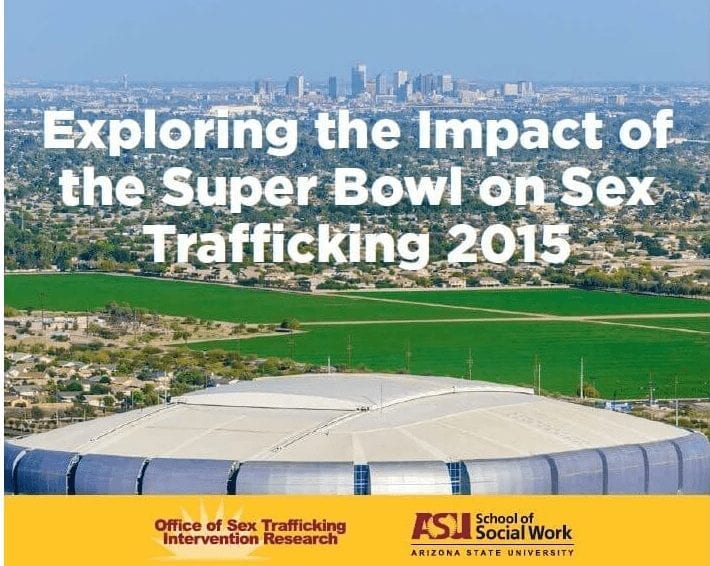
Countering Human Trafficking at Large Sporting Events
The purpose of this two‐year study was to develop new knowledge about the true impact of the Super Bowl on sex trafficking by exploring ad volume, trends and movement of ads along with the scope and volume of demand associated with the event. In years past, media reports have speculated that the Super Bowl was one of the most prominent national events where sex trafficking occurs; however, researchers have yet to substantiate these statements.
While there is no empirical evidence that the Super Bowl causes an increase in sex trafficking compared to other days and events throughout the year, there was a noticeable increase in those activities intended to locate victims from both law enforcement and service provision those activities intended to locate victims from both law enforcement and service provision about sex trafficking, as well as training for hotels, airport staff, and other tourism focused groups. Elected officials joined activists, student groups and members of the community to increase the overall public knowledge about the issue of sex trafficking, with media coverage in print, radio and billboards across the Greater Phoenix Metropolitan Area.
Building upon previous research on demand for commercial sex conducted by the Arizona State University Office of Sex Trafficking Intervention Research, the authors sought to quantify the net effect of the Super Bowl on local, regional and national sex trafficking in an empirical fashion, using source data provided by a leading internet based adult services website and data collected using the website.
This study is the second half of a two‐year study that was initiated before, during and after the Super Bowl in 2014, with the goal of comparing ad and demand volume in the 2015 Super Bowl host city with the 2014 host city. Additionally, a related research objective was to apply these findings to create a baseline of working knowledge regarding ad volume, demand and trends in the city that will host the next Super Bowl in 2016.
Both the 2014 and 2015 studies included two parts that helped to draw a picture of the sex buying/selling market. The first part provided a baseline measurement of regional sex trafficking trends in Northern New Jersey/New York and Phoenix, Arizona by measuring ad volume for the average number of ads posted for the ten days prior to and including Super Bowl Sunday, as well as using a validated tool to flag high risk trafficking ads. In the second part, researchers explored demand by placing decoy sex ads online and measuring the response.
Read the full report here.
